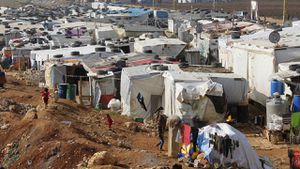As the planet heats up, a new frontier of climate concern surfaces from beneath the Arctic permafrost. According to a groundbreaking study led by Colorado State University (CSU), soil microorganisms waking up from long-term dormancy could drastically amplify greenhouse gas emissions, an aspect previously underrepresented in climate forecasts.
These findings shed light on the role of soil microorganisms, which have been somewhat overlooked until now. With permafrost thawing due to global warming, these microorganisms begin to metabolize carbon stored in the frozen ground, leading to the release of carbon dioxide and methane. This microbial activity had been underestimated in earlier climate models, which assumed that certain organic compounds, such as polyphenols, would remain largely intact. However, as the CSU team discovered, these previously 'untouchable' compounds are indeed broken down by active soil microbes.
“We thought there were pools of carbon that microbes wouldn’t utilize, but our research shows they will,” stated Bridget McGivern, the lead author and postdoctoral researcher at CSU. This revelation throws a wrench in the 'enzyme latch theory,' which proposed that adding polyphenols to thawing permafrost could curb microbial activity and thus trap greenhouse gases.
Associate Professor Kelly Wrighton highlighted the importance of these findings, noting, “We can’t devise solutions if we don’t understand the soil’s internal mechanisms.”
The ingenuity of this research lies in its methodology. McGivern, who started this research during her Ph.D., drew intriguing parallels between microbial processes in oxygen-poor gut environments and the anaerobic conditions of permafrost soils. This insight led to developing a comprehensive gene sequence database, which confirmed that soil microbes could indeed metabolize polyphenols.
The study utilized core samples from a renowned research site in northern Sweden, long synonymous with permafrost studies. McGivern and her team’s analysis revealed active gene expressions for polyphenol metabolism, countering the long-held belief that these processes couldn't occur in such environments.
While these findings are pivotal, they merely scratch the surface. The next step involves determining the constraints and rates of these microbial processes, essential for accurate quantification of potential greenhouse gas emissions.
“This research aims to create robust predictive models to help us manage the climate crisis more effectively,” Wrighton emphasized. The urgency of understanding and mitigating these newly revealed threats cannot be overstated. Future research will focus on refining these models and exploring mitigation strategies that might help control such emissions from thawing permafrost.



